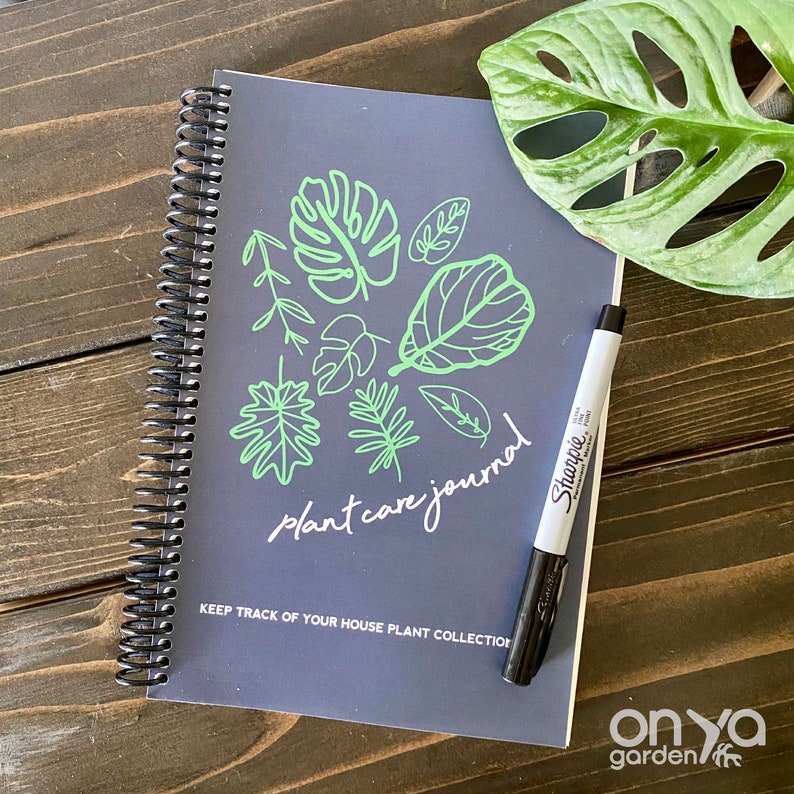7 Easy and Quick Indoor Plant Care Tips
7 Easy and Quick Indoor Plant Care Tips
Whether you're an expert or novice at indoor house plants, we’re all still learning as we go along. Just when you think you have it all figured out, you find a pest, or accidentally overwater or underwater, or that new plant just isn't loving it's environment so you learn from the experience.
Here are 7 easy and quick indoor plant care tips that should help any new plant parent.
1. Give your climbing plants a Trellis or Plant Stick
In their natural habitat, climbing plants will climb nearby trees to get more light. Although letting your plants trail and hang can give your space a beautiful aesthetic, a plant that grows down away from the light can also result in leggy growth and smaller leaves. Adding a trellis to your plant gives it support for growth, and allows for air to circulate around the leaves and stem, resulting in more growth!


2. Track your plants using our Plant Care Journal
With fill in pages for 60 plants, plus additional plant note pages, our Plant Care Journal will help you be an organized Plant Parent. This spiral-bound Plant Diary is an easy way to organize and track the progress of your plants.

Each section includes space to record:
- the name of your plant
- date acquired
- drawing or photo (can fit a mini polaroid photo!)
- location in your house
- requirements for light, water, humidity, and nutrients
- 2 lined blank pages to record extra information on your plant
Start tracking your plants and their progress so you can see how they progress, and keep track of their requirements so you will remember how to care for them in the future.
3. Repot your House Plants
This will depend on the growth of your house plants, but it's a good idea to look at repotting a plant every 6-12 months, depending on the condition of the soil and plant. Repotting gives the plant a fresh soil mix and adds nutrients which improves their vitality, and can give them a bigger space to grow if you decide it needs a bigger pot.
If it is in a bigger pot, consider elevating it with our Modern Adjustable Plant Stand which can be 2 different heights, and adjustable to a pot that's 8" - 12" wide.

4. Mix in Moss with your Indoor House Plant Soil
If you have moisture-loving plants like ferns, snake plants, spider plants, parlor palms, you can use moss such as Sphagnum Moss, Peat Moss, Spanish Moss or other types of moss mixed into their soil. Moss helps potted plants absorb and retain water and nutrients.

5. Provide the Correct Type of Light for your Plants
Different plants need different types of lighting. Some need bright, direct light, some need bright indirect light, (near a window but not right in the light), and some prefer to be away from the window. Check the requirements when you get a plant to make sure you're familiar with what it needs so you start off successful.

6. Remove Dead Leaves and Stems, and Trim Plants to Propagate
Every plant will get yellow leaves or stems that aren't producing leaves. When this happens, cut them off. Use your hands or clean scissors or pruning shears. Pruning your plant allows the plant to put it's energy into the healthy foliage, and it improves the plant's appearance and growth.
If you have a longer vine or would like to make your plant more full, trim some nodes off and place into water so they can grow roots. Use our Modern Propagation Stations to propagate in style!

7. Clean the Leaves!
Whenever you dust the surfaces in your house, dust your larger plant leaves. This will help them photosynthesize and absorb the air. Give them a good wipe down with a soft microfiber cloth. 

